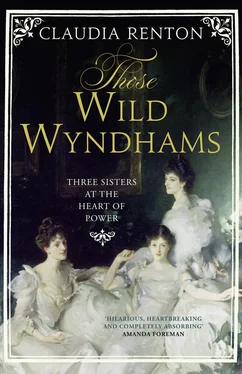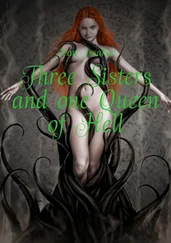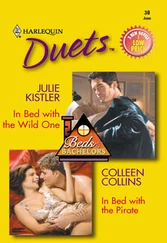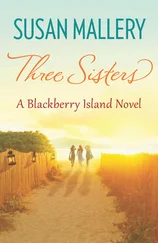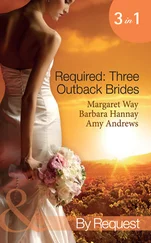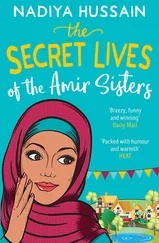Madeline was well-born, if of colourful ancestry, but she had no money to speak of. Her widowed mother had brought up twelve children on an army pension. Madeline would receive just £50 a year on her mother’s death. 16The infatuated Percy persuaded his forbidding father – who succumbed immediately to Madeline’s charm on meeting her – to give his blessing to the match, and to dower his bride. A month before the Wyndhams married, £35,727 16s 5d in government bonds (equivalent to around £2.75 million today) was transferred from Lord Leconfield’s Bank of England account to the trustees of Percy and Madeline’s marriage settlement. 17The trust was to provide for Madeline and any younger children of her marriage. From the capital’s interest Madeline would receive annually a personal allowance, known as pin money, of around £300. A provision stipulated that if the marriage proved childless, the money would devolve back to the Leconfields. Otherwise there was no indication that Madeline had not brought this money herself to the marriage. 18A baronet’s genteelly impoverished seventh daughter had been transformed, in effect, into an heiress of the first water.
The provision was never exercised. Percy and Madeline had five adored children over the course of a decade – the three girls, and the boys George and Guy. ‘ Ever since your birth has my Heart & Soul loved you & laughed with you & wept with you … sang to you to sleep – & anguished with you in all your sorrows …’ wrote Madeline Wyndham to her youngest, Pamela. 19She might have made the comment to any of her children, all of whom Percy deemed ‘confidential’, his highest form of praise. 20Madeline Wyndham had been raised in a Rousseauesque environment of loving simplicity. The Campbell girls had no governess – doubtless partly for financial reasons – and were encouraged to educate themselves, reading whatever they chose, and making off into the fields around Woodview, their rambling house in Stillorgan, then a small village outside Dublin, to explore the natural world. Percy, raised in frigid splendour by evangelical parents who banned everything from novels to waltzing, was entranced upon first visiting Woodview. He vowed that his children would be raised in a similarly warm, loving and natural milieu. And so, despite an aristocratic lifestyle, the loving intensity of life among the Wyndhams was almost bourgeois. 21
Mary, like all her siblings, was born into privilege’s heartland. The family’s life was played out against a backdrop of staff – butler, housekeeper, footmen, housemaids, cook, kitchen maids, stable boys, gardeners and the ‘odd-man’ who lit the house’s lamps each evening as dusk fell. Only the absence of this – mostly silent – audience would have been remarkable. Madeline Wyndham never travelled anywhere without her lady’s maid Easton (known as ‘Eassy’), nor Percy without his Irish valet Thompson (‘Tommy’). Their children’s retinue included their nanny – the magnificently named Horsenail – nursemaid Emma Drake and, when a little older, governesses and tutors.
Society – of which the Wyndhams were impeccably a part – was a close-knit, interconnected group of ‘the upper 10,000’, four hundred or so families constituting Britain’s ruling class. To outsiders it was an impenetrable, corporate mass with ‘a common freemasonry of blood, a common education, common pursuits, common ideas, a common dialect, a common religion, and – what more than anything else binds men together – a common prestige … growled at occasionally, but on the whole conceded, and even, it must be owned, secretly liked by the country at large’, said the Radical Bernard Cracroft in 1867. 22During the mid-Victorian years, when the Queen and Prince Albert set the model of domestic rectitude, evangelism had a firm grip on the upper classes. Yet by the 1860s Darwinism had loosened that hold; and a Prince of Wales who liked a good time had come of age. Bertie’s fast-living, hard-gambling Marlborough House Set became known for its sybaritic tendencies. Meanwhile, Percy and Madeline were part of a set considered markedly bohemian since, in the words of the novelist and designer Alice Comyns Carr, they ‘took a certain pride in being the first members of Society to bring the people of their own set into friendly contact with the distinguished folk of art and literature’. 23
Madeline and her female friends – aristocrats all – dressed in flowing gowns, tied their hair back simply and draped themselves in scarves and bangles. Madeline herself was reputedly the first woman in England to smoke, with a habit of three Turkish cigarettes a day, one after each meal. 24Her friend Georgie Sumner dyed her hair red to resemble more closely ‘stunners’ like Lizzie Siddal, the Pre-Raphaelite muse. They read the bibles of Pre-Raphaelitism, Malory’s Morte d’Arthur and Tennyson’s poem of the same title, and, in the setting of their own family seats – Scottish castles and English stately homes – posed in medieval dress for Julia Margaret Cameron’s camera. They frequented Little Holland House, home of Cameron’s sister, Sara Prinsep, where G. F. Watts was literally the artist in residence (he moved in during a period of illness, and never left); and Leighton House, the creation of Frederic Leighton, later President of the Royal Academy. They considered Burne-Jones, as yet unrecognized in the wider world, to be a genius. Madeline was a talented amateur artist, particularly in the decorative arts, with a near-perfect eye. In 1872 she helped to found the School of Art Needlework with her friend Princess Christian, a daughter of the Queen. In later life, she studied enamelling under that craft’s master, Alexander Fisher. All the artists Madeline knew thought she had a true artist’s soul. Beauty could cause her ‘thoughts that fill my heart to bursting’, she told Watts. 25
For the Pre-Raphaelites and their heirs, beauty’s pursuit was not indulgence but necessity. Their dreamy art, born out of the Industrial Revolution, was intended to counteract, even arrest, the modern world’s ugliness. For Burne-Jones’s great friend and business partner William Morris, whose Oxford Street store, Morris & Co., was the favoured emporium of the English aesthetic classes, this philosophy led him to political activism and ardent socialism. Burne-Jones was content to improve society by feeding its soul through its eyes. The provision of art to cultivate and inspire the masses was now part of civic responsibility, reflected in the large public art galleries constructed in urban centres of the industrial north.
Mary’s early childhood in Cumberland was like a Pre-Raphaelite painting brought to life. The Wyndhams lived at Cockermouth Castle, a strange, half-ruined property on the River Cocker’s banks, until 1869. Afterwards they rented Isel Hall, an Elizabethan manor a few miles away. Madeline Wyndham took her children out among the heather to draw and paint, and read aloud to them Arthurian tales. At night she sang berceuses , French lullabies learnt from her own mother, and left them to sleep, soothed by the sound of the Cocker’s rushing waters and owls hooting in the dark. She had miniature suits of armour made for George and Guy. The children played at knights and damsels with Mary dressed in her mother’s long flowing skirts. 26A portrait of eight-year-old Mary in Cumberland by the Wyndhams’ friend Val Prinsep, in the flat, chalky style characteristic of their artistic circle, shows a tall, round-eyed beautiful child. In wide straw hat and loose mustard-yellow dress, she gazes directly at the viewer, bundling in her skirts armfuls of flowers. 27
One of Mary’s earliest adventures in childhood was scrambling after her father through thick heather up Skiddaw, the mountain dominating the Cumbrian skyline, with a trail of dogs in search of grouse; then sleeping overnight in a little lodge perched on the mountainside. 28In adulthood, Mary wrote lyrically of ‘the club & stag, the moss, the oak & beech fern, bog myrtle, & grass of Parnassus – Skiddaw in his splendid majesty – covered with “purple patches” (of heather) with deep greens & russet reds & swept by the shadows of the clouds – my heart leaps up – when I behold – Skiddaw – against the sky …’. 29Mary considered herself a lifelong ‘pagan’, fearlessly finding freedom in wildness. She attributed these qualities to her Cumberland childhood. She mourned ‘beloved Isel’ when the Wyndhams finally gave it up in 1876. Ever after, Cumberland was a lost Arcadia to her.
Читать дальше
